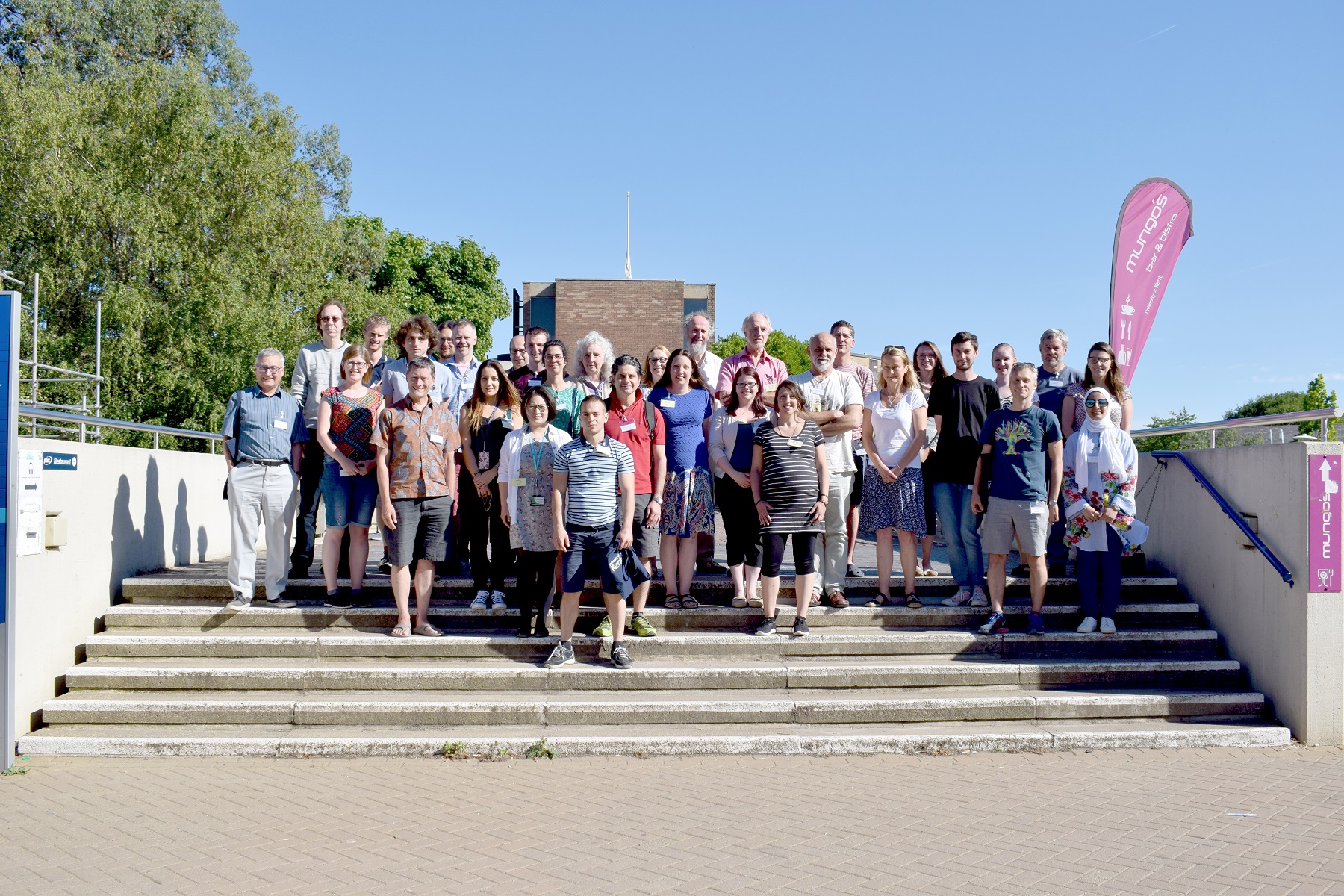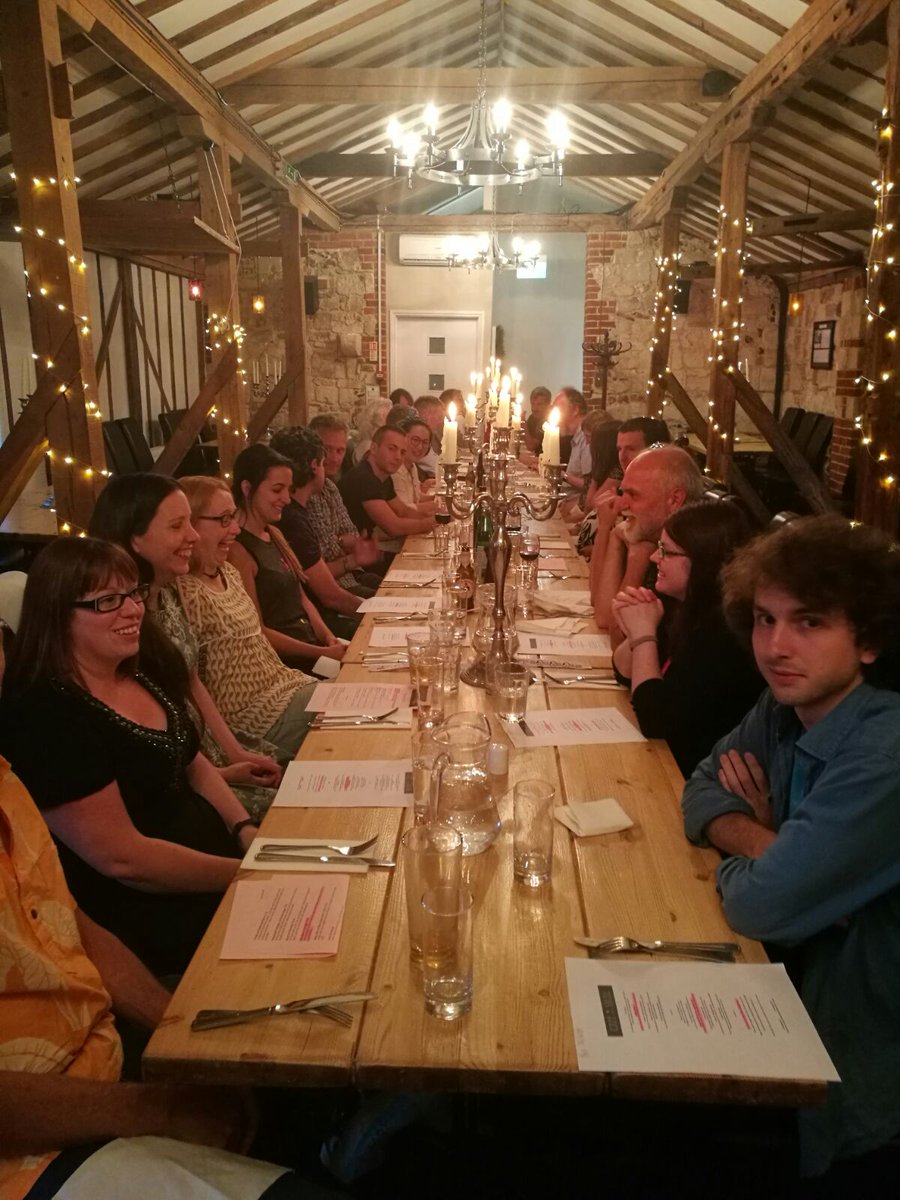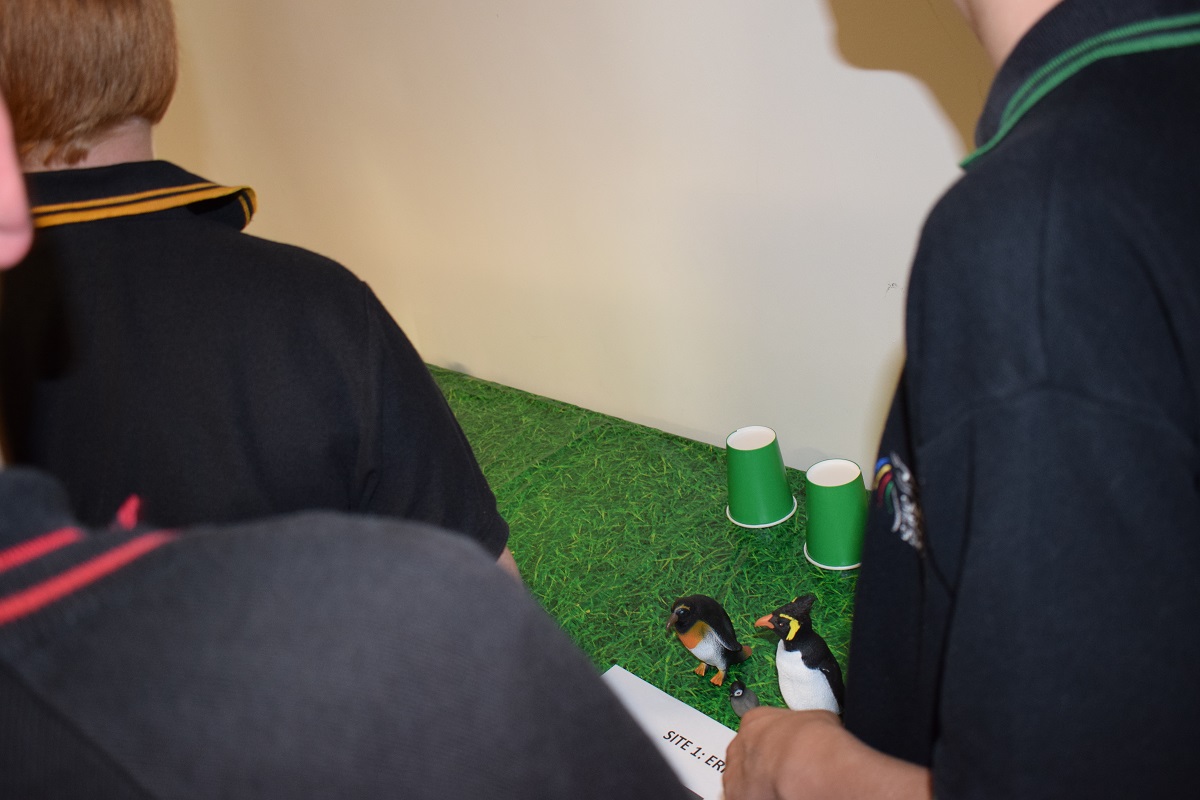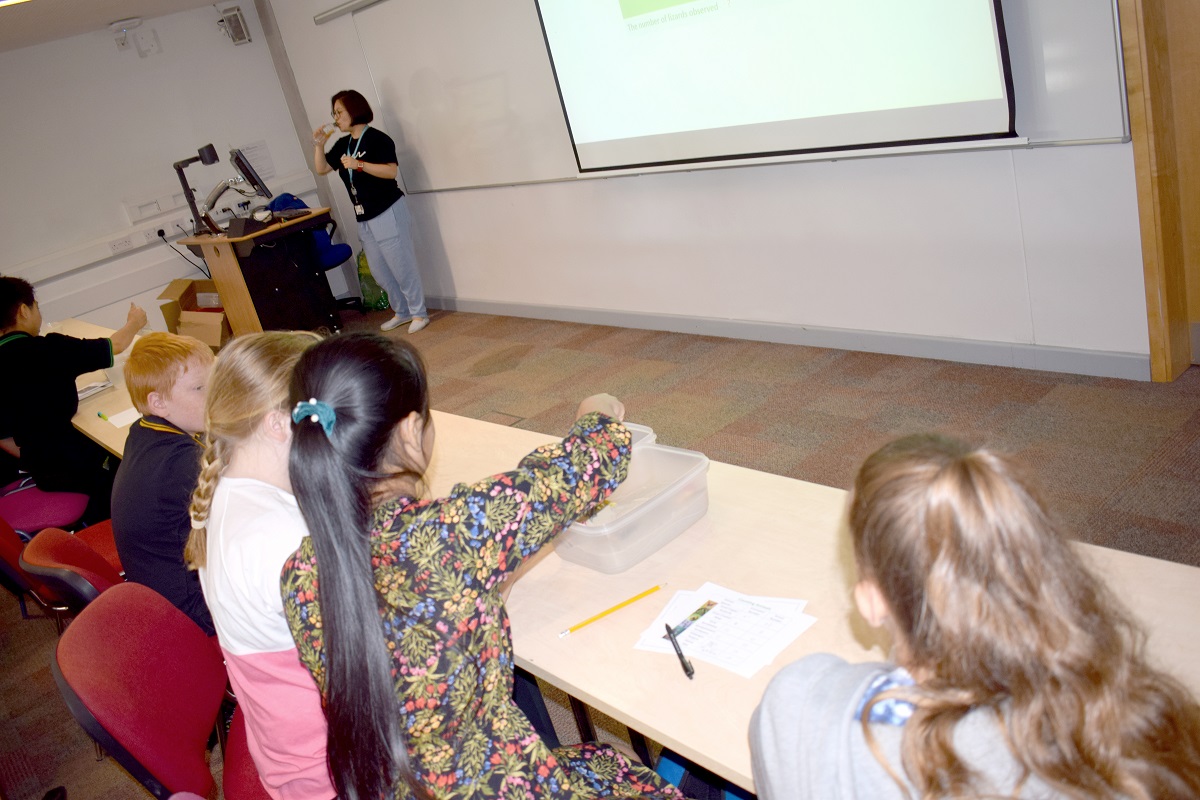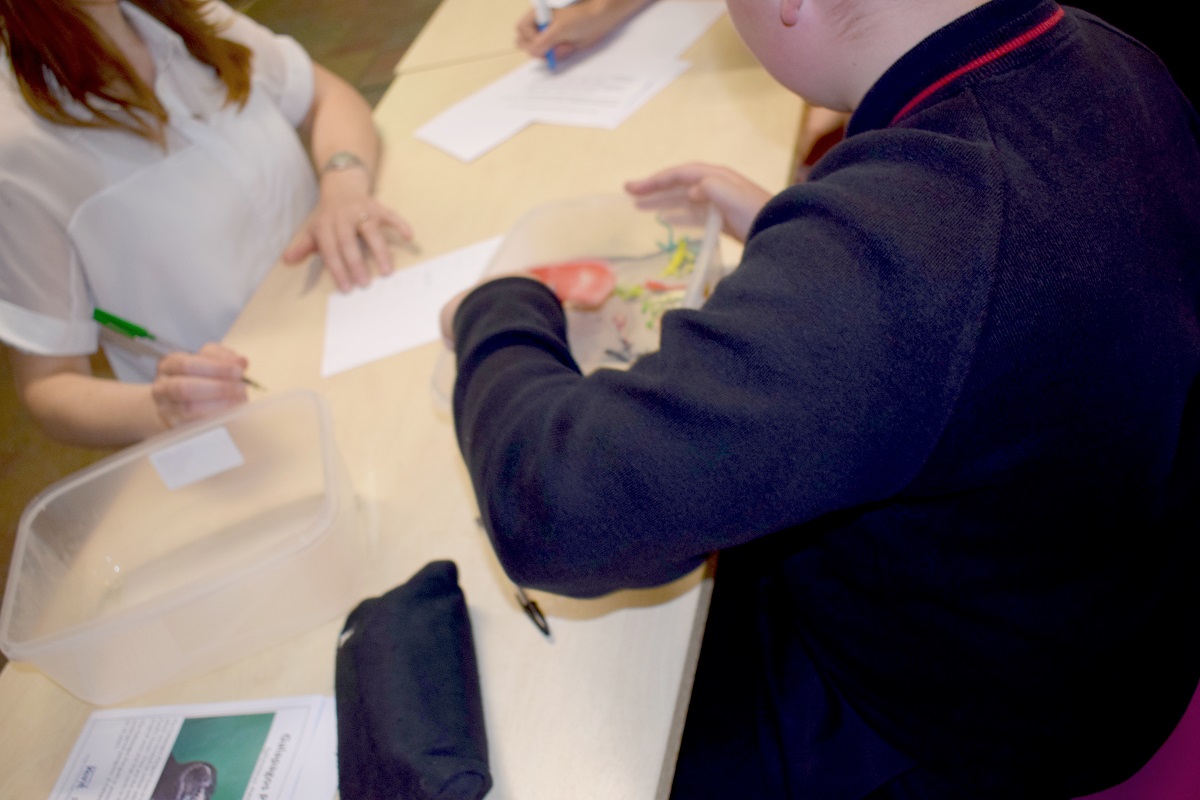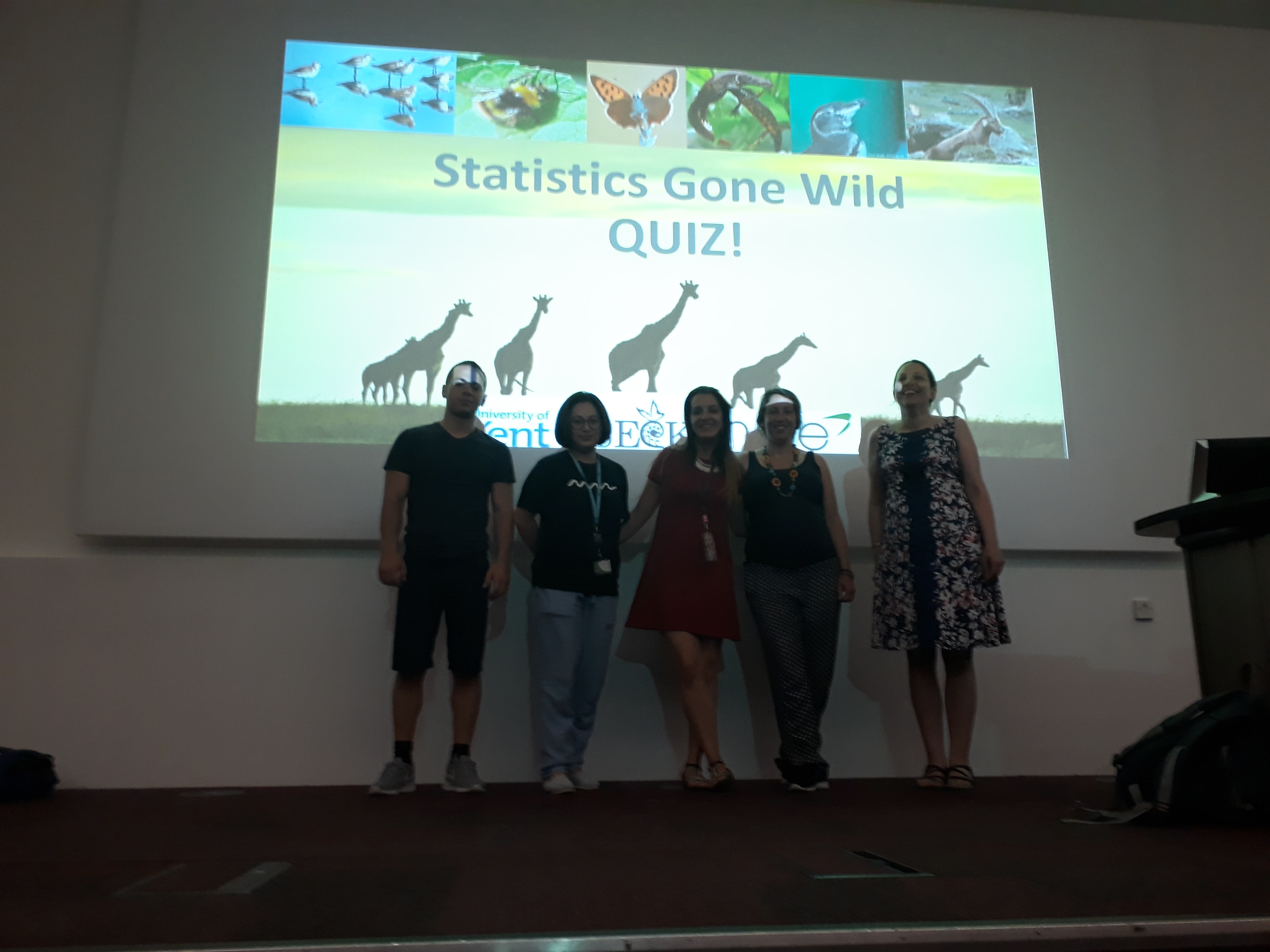Congratulations to Takis for Bilateral Exchange of Academics 2017 grant from German Academic Exchange Service.
Category Archives: Uncategorized
Congratulations to Emily Dennis for Honourable Mention from the judges of the 2017 Young Biometrician’s Award
Congratulations to Emily Dennis who received an “Honourable Mention” from the judges of the 2017 Young Biometrician’s Award, jointly run by the British & Irish Region of the International Biometric Society and the Fisher Memorial Trust. This was for her contribution to the 2016 Biometrics paper “A generalised abundance index for seasonal invertebrates”, which was written whist at the University of Kent.
The panel comprised Professor R A Bailey, on behalf of the Fisher Memorial Trust, Dr G Hepworth from the University of Melbourne as international judge and Professor S G Thompson representing the British & Irish Region.
Congratulations to Anita
Congratulations to Anita Jeyam for passing her PhD viva with minor corrections. Her thesis is on New Diagnostic Tools for Capture-Recapture Models.
Congratulations to Natoya
Congratulations to Natoya Jourdain for passing her PhD.
Natoya’s PhD was on New Analytical Methods for Camera Trap Data.
Abstract
Density estimation of terrestrial mammals has become increasingly important in ecology, and robust analytical tools are required to provide results that will guide wildlife management. This thesis concerns modelling encounters between unmarked animals and camera traps for density estimation. We explore Rowcliffe et al. (2008) Random Encounter Model (REM) developed for estimating density of species that cannot be identied to the individual level from camera trap data. We demonstrate how REM can be used within a maximum likelihood framework to estimate density of unmarked animals, motivated by the analysis of a data set from Whipsnade Wild Animal Park (WWAP), Bedfordshire, south England. The remainder of the thesis focuses on developing and evaluating extended Random Encounter Models, which describe the data in an integrated population modelling framework. We present a variety of approaches for modelling population abundance in an integrated Random Encounter Model (iREM), where complicating features are the variation in the encounters and animal species. An iREM is a more exible and robust parametric model compared with a nonparametric REM, which produces novel and meaningful parameters relating to density, accounting for the sampling variability in the parameters required for density estimation. The iREM model we propose can describe how abundance changes with diverse factors such as habitat type and climatic conditions. We develop models to account for induced-bias in the density from faster moving animals, which are more likely to encounter camera traps, and address the independence assumption in integrated population models. The models we propose consider a functional relationship between a camera index and animal density and represent a step forward with respect to the current simplistic modeling approaches for abundance estimation of unmarked animals from camera trap data. We illustrate the application of the models proposed to a community of terrestrial mammals from a tropical moist forest at Barro Colorado Island (BCI), Panama.
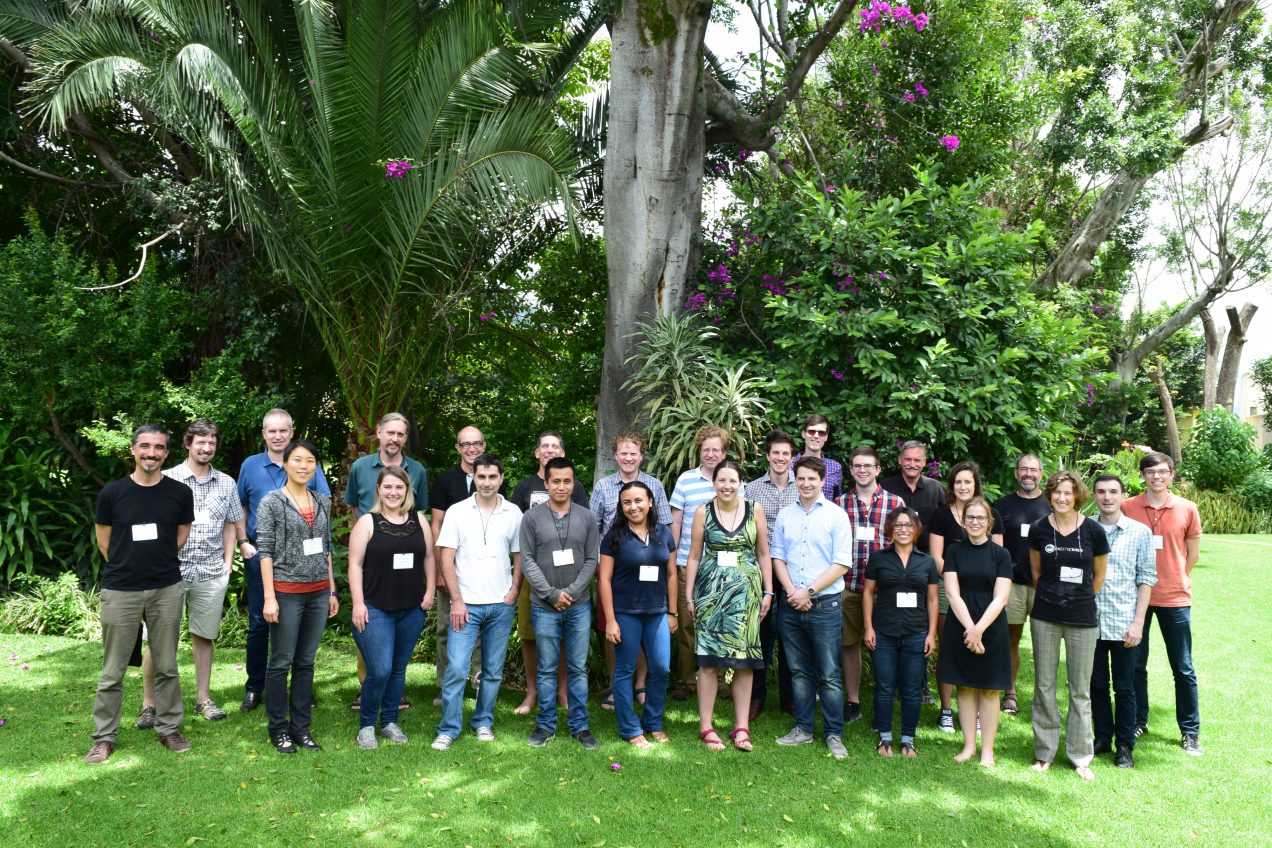
New Perspectives on State Space Models
From 27th Aug – 1st Sept Diana attended the BIRS workshop New Perspectives on State Space Models in Oaxaca, Mexico.
On Monday Diana gave the 5 minute lightening talk: Talk Slides
Then on Thursday Diana presented a 2 hour workshop on parameter identifiability: Work shop slides
The recording of the workshop session is available at
http://www.birs.ca/events/2017/5-day-workshops/17w5120/videos/watch/201708310917-Cole.html
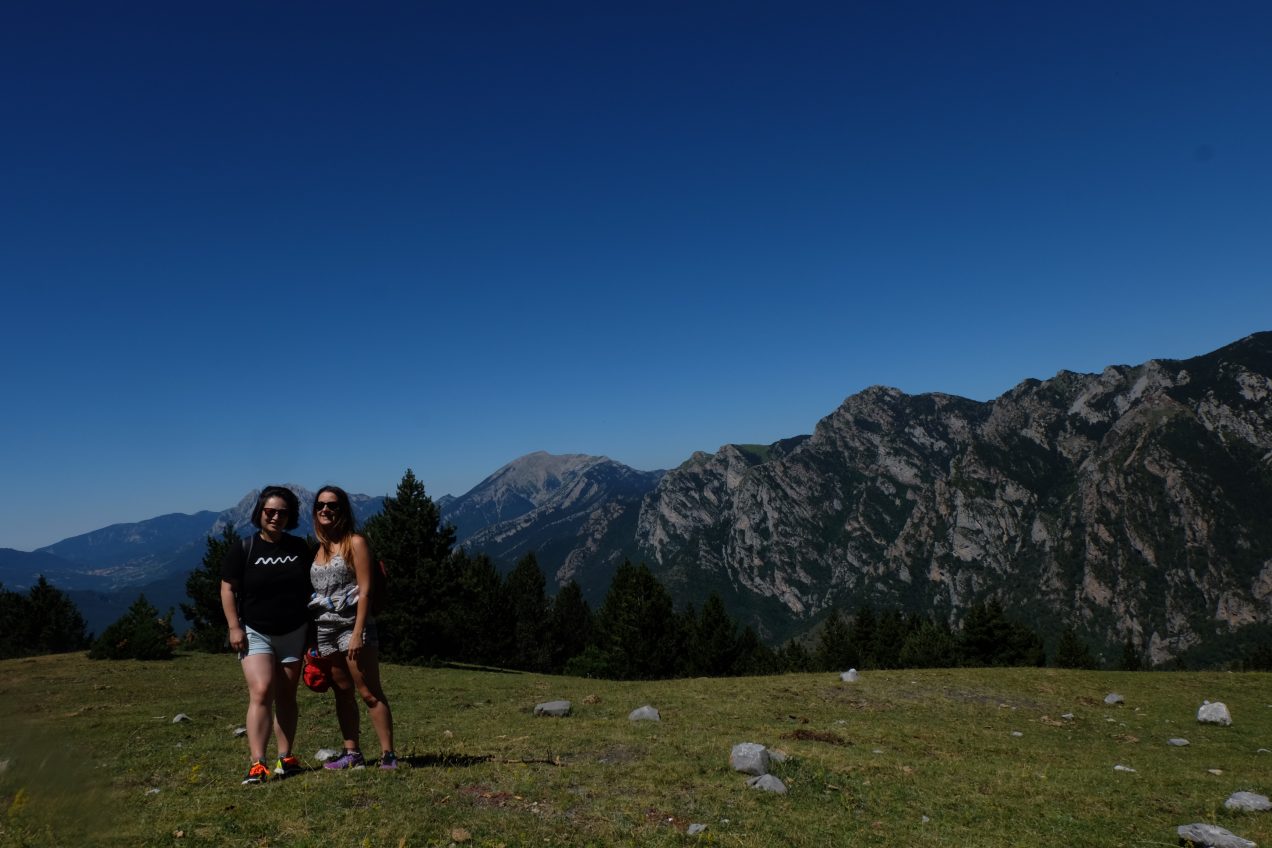
EURING 2017 Analytical Meeting
From 2nd to 7th July Marina, Ming and Alex attended the EURING Analytical Meeting in Barcelona, Spain.
Marina gave a talk on Ring-Recovery Methods for Historical Ringing Data. Talk slides are available at: Jimenez-Munoz Slides
Ming presented a poster on The use of penalised likelihood to improve estimation in removal models. The poster is available at: Zhou Poster
Alex gave a talk on A hierarchical Bayesian nonparametric model for bird migration patterns in UK breeding sites.
NCSE Summer Meeting
From the 26th June to 29th June, at Kent we hosted the 7th NCSE summer meeting. We hosted 37 statisticians and ecologists from across the UK and beyond.
On Monday Byron gave a talk on a stochastic dynamic model for longitudinal butterfly data, Ming presented work on the use of penalised likelihood to improve estimation in removal models, Alex talked about a Polya Tree based model for counts of unmarked individuals in an open population and Eleni gave a talk on modelling temporary emigration using a Bayesian nonparametric changepoint process for capture-recapture data. On Tuesday Diana presented work on problems with using data cloning to investigate identifiability. On Wednesday Marina talked about integrated population models incorporating spatial information and Takis presented work on estimation of roe deer population density in a mountainous Mediterranean area using hierarchical distance sampling. The full program of talks and abstracts can be found at http://tiny.cc/ncsemeeting.
Statistics Gone Wild
On 23rd June the SE@K group hosted 110 school pupils in years 7 to 9 at the event Statistics Gone Wild.
The event started with an introduction, on counting animals, given by Diana, where each of the students were given animal cards representing one of the above six species. (More information on the research done on these six species is given here http://blogs.kent.ac.uk/seak/2017/05/22/statistics-gone-wild-animals/)
There were then 3 interactive sessions:
–Capture-Recapture (throwing birds in the air) given by Alex;

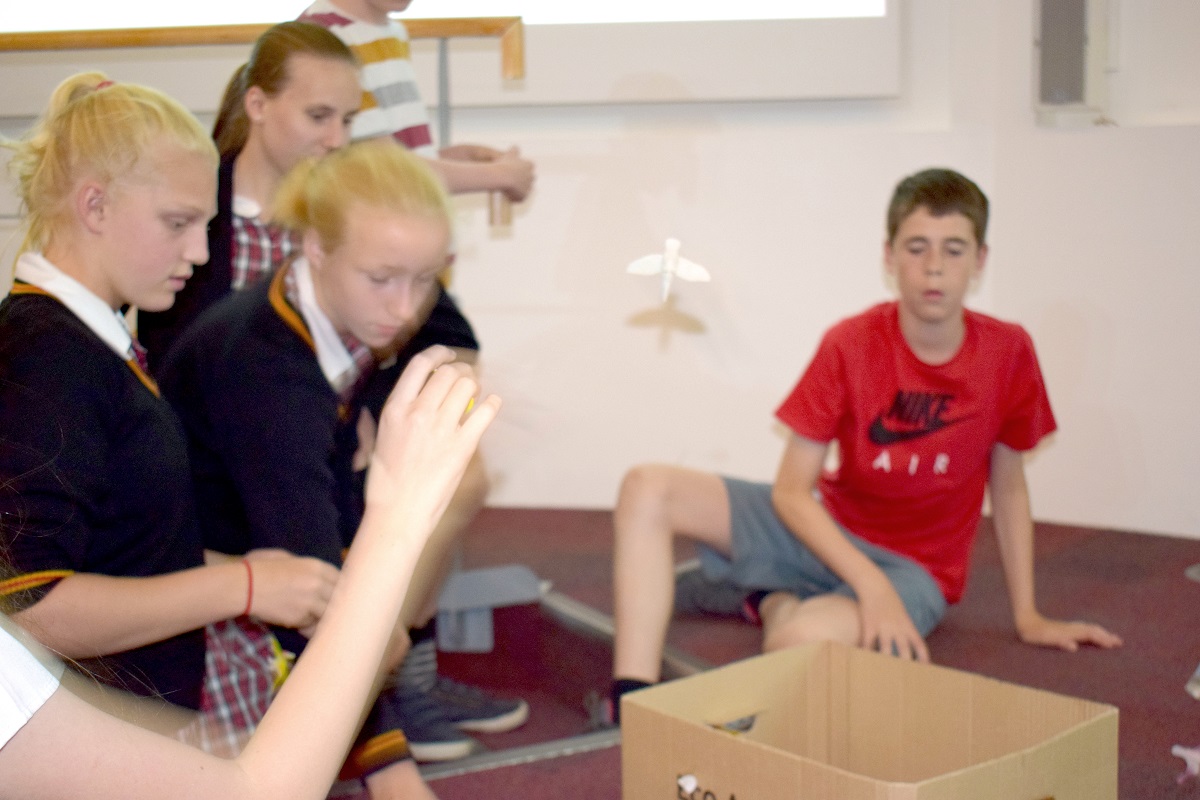 –Occupancy Modelling (looking for hidden penguins) given by Marina;
–Occupancy Modelling (looking for hidden penguins) given by Marina;
–Removal Modelling (digging for lizards in the sand) given by Ming.
The day ended with an interactive quiz, given by Eleni.
Thank you to Joe Watkins for organizing and running the day, thank you to the 3 ambassadors, John, Kezia & Patrick, for their support throughout the day. And thank you to Kerry, Judith and Amy for their admin support.

NERC Advanced Training Course
Statistical models for wildlife population assessment and conservation
19-23 March 2018
University of Kent
Further details of the workshop and details of how to apply for a place can be found here:
https://www.kent.ac.uk/graduateschool/skills/advancedtraining.html
Please note that the deadline for applications is 1st October 2017. Successful applicants will be informed in early September.
We have 30 fully-funded places (inc. travel and accommodation) and priority is given to NERC-funded PhD students but if spaces remain we are able to offer the funded places to other PhD students and early-career researchers.
Within the environmental sector there is currently a shortage of practitioners equipped with the statistical modelling skills to carry out reliable population assessments. Consequently, environmental impact assessments (EIAs) and development mitigation projects often use population assessment protocols that are not fit-for-purpose1. The skills shortage arises because (1) recent advances in statistical models for population assessment are largely confined to the academic sector with little penetration to the end-users; and (2) although many postgraduate programmes have a statistical modelling training component, this often fails to expose PhD students to new models in the area and the potential applications these have for conservation practice2. This training programme will provide a cohort of PhD students and early career researchers/practitioners with the relevant modelling skills required for a career that involves wildlife population assessment for conservation.
- Griffiths, Foster, Wilkinson and Sewell (2015). Science, statistics and surveys: a herpetological perspective. Journal of Applied Ecology. doi: 10.1111/1365-2664.12463
- McCrea and Morgan (2015). Analysis of capture-recapture data. Chapman & Hall/CRC Press, Florida.
Proposed programme of the course
The workshop will focus on ecological questions that arise in conservation practice and use real case study data. Training will include individual-based models, such as capture-recapture, but will also embrace scenarios more frequently used in EIA, such as batch-marked, presence/absence, site occupancy and counts. Applications will include newts, butterflies, birds, bees, beetles, ibex and bats. Each module will be accompanied by a practical computer session using R and each module builds on the last so that delegates build a portfolio of statistical skills.
Training outcomes: By the end of the course, attendees will be able to:
- construct, interpret and fit relevant stochastic models, use different methods of inference, understand the pros and cons of Bayesian and classical methods and the use of prior information;
- personalise R code to undertake modelling of their own research data;
- understand data needs for animal population assessments for EIAs and conservation;
- analyse animal population data to meet both conservation and commercial needs.
Draft timetable:
- Likelihood and probability theory
- Bayesian inference
- Basic model assessment (AIC/absolute GOF)
- Practical session: Introduction
- Imperfect detection
- Data types, relationships and summaries.
- Introduction to data sets/case studies (bees, butterflies, newts, mallards etc)
- Practical session: converting format of data and summarising complex data.
- Estimating abundance
- M0,Mtbh, removal
- CR/RR
- Occupancy
- Practical session: model fitting, optimisation, use of packages.
- Citizen science data
- Small/sparse data and big data issues
- Cost-effectiveness in study design and statistical power.
- Informative prior information.
- Practical session: power analyses and adapting models
- modelling movement
- state uncertainty
- species interaction
- spatial models
- integrated modelling
- Practical session: use of Rjags, Bayesian graphical models using MCMC.
- Practical session: self-lead worksheets
- Multistate examples
- PR diagnosis
- Diagnostic GOF testing
Eleni gave a seminar at Sheffield
Eleni gave a seminar on the 15th of March 2017 as part of the Ecology, Evolution and Environment seminar series at the Department of Animal and Plant Sciences, University of Sheffield.
Title: Modelling phenology for marked and unmarked populations
Abstract: In this seminar I will discuss fairly recent models for capture-recapture and for count data that enable us to estimate, among other things, phenology of wildlife populations. The methods explored will include classical as well as Bayesian parametric and non-parametric approaches. They will be demonstrated using data on breeding great crested newts, migrating reed warblers, bivoltine butterfly species , bumblebees from the citizen science scheme BeeWalk as well as data on anglers in Norway.

